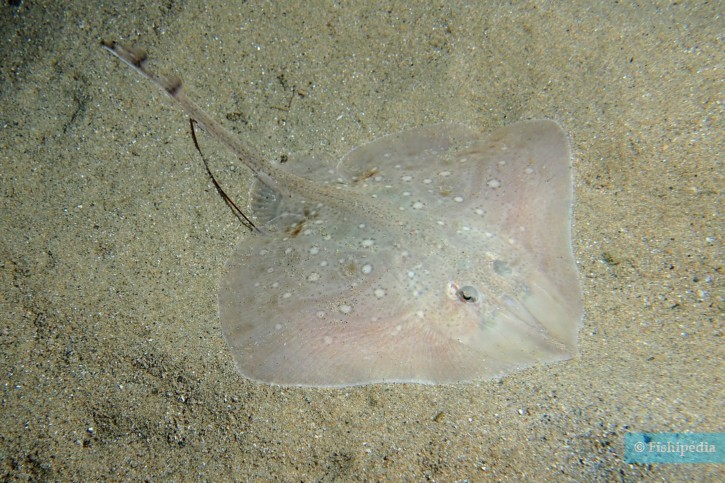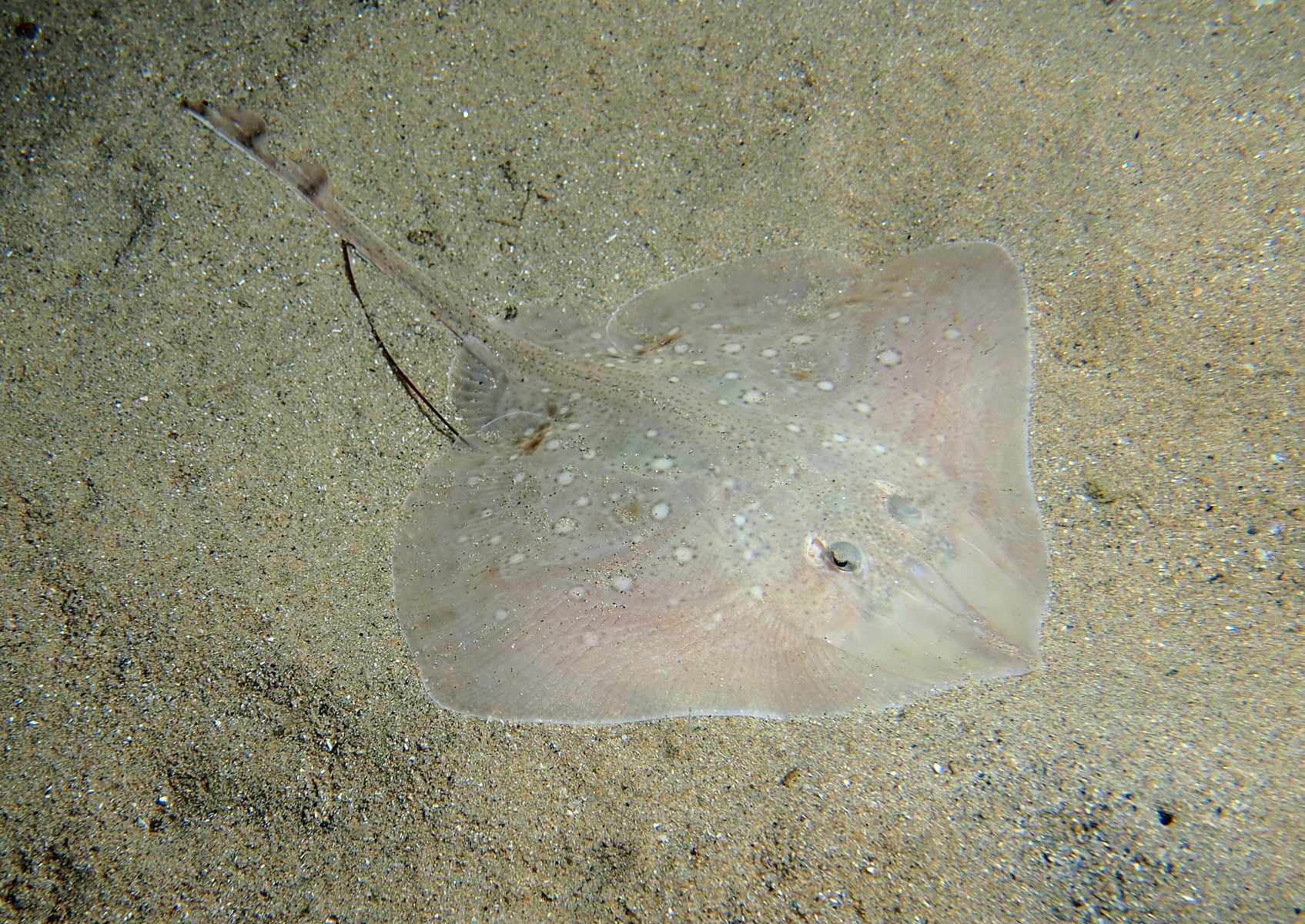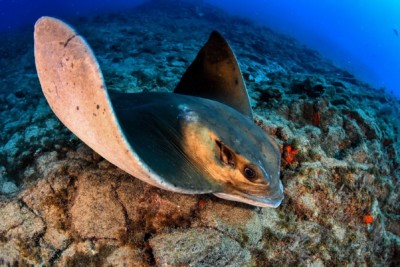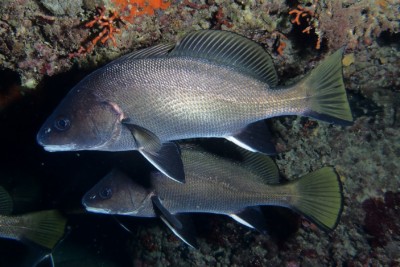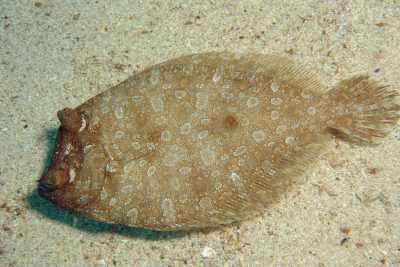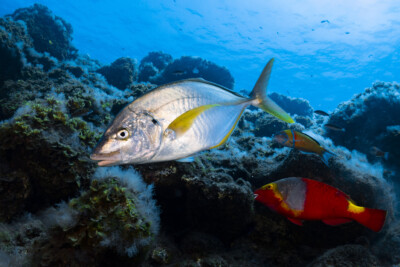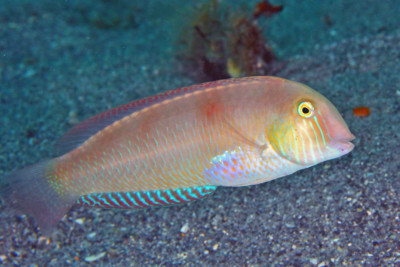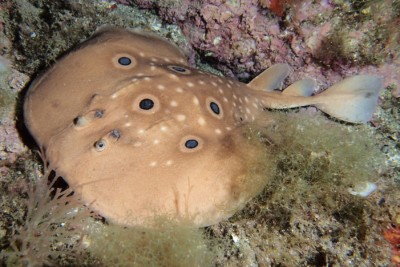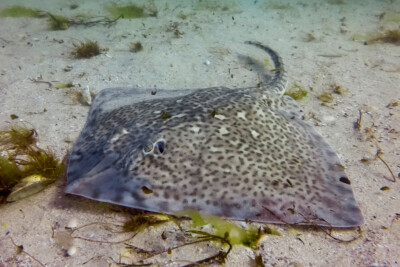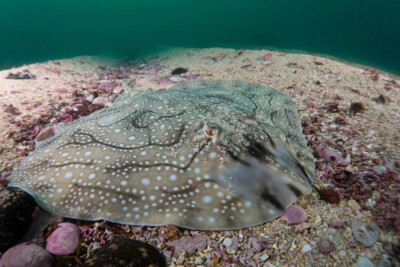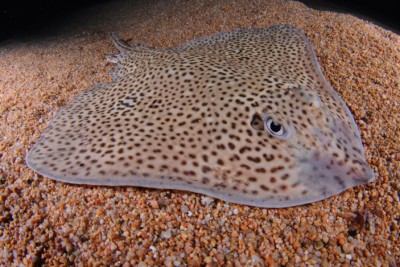Introduction
The starry skate Raja asterias, commonly known as the "starry skate of the Mediterranean", is an endemic species to this sea. It is absent from the Black Sea. Some rare sightings have been made near the Strait of Gibraltar.
It is the target of numerous artisanal fisheries from Italy to Greece and throughout the Maghreb coast.
The dwindling catches seem to indicate a decrease in populations. This could be explained by slow growth of individuals, late sexual maturity, and low fecundity. Up to half of the captured skates have not yet had time to reproduce. For all these reasons, the IUCN has classified this skate as "near threatened" species.
There are about fifteen species of skates endemic to the Mediterranean. Trawl fishing is poorly monitored and leads to the fishing of all species indiscriminately. In Italy, most skates caught by trawl nets were deceased before being unloaded on deck.
The implementation of sustainable fishing policies would allow for the consolidation of populations, and could prevent the disappearance of several commonly consumed species. In the Italian zone, some populations seem to be currently resisting fishing pressure but further studies are awaited.
Who is it?
Morphology
-
Type
-
Average size60 cm
-
Maximum size70 cm
-
Mimicrysand
-
Patternponctuations
-
Type
-
Average size60 cm
-
Maximum size70 cm
-
Mimicrysand
-
Patternponctuations
How to recognize This fish ?
The body is golden to ochre, with lighter spots. It varies in size.
Like other skates, the body is flattened, in a rhombic disc shape. The snout is pointed, the body, head, and pelvic fins are fused. In juveniles, the upper surface is smooth.
Sexual dimorphism
As with other skates and sharks, males have two pterygopods used for fertilizing females.
Behaviour & Life cycle
-
dietcarnivorous
-
Sociabilityliving in a group or alone
-
territorialYes
-
Way of livingdiurnal
The starry skate frequents sandy and muddy bottoms. It is a small predator that spends most of its time buried to hunt and escape predators.
Juveniles primarily feed on crustaceans, mollusks, and worms. Adults supplement this diet with small fish.
Reproduction
-
Reproductionovovivipare
This oviparous species forms a couple for reproduction. A study conducted on the Italian coasts suggests that reproduction occurs year-round. Eggs are typically deposited at a depth of 30 to 40 meters. Studies differ on the number of eggs produced annually by a female. This number is estimated between 30 and 100 eggs.
Like other species in the genus, eggs are protected by a capsule. The capsules are 4.5 cm long and 3 cm wide.
After 5 to 6 months of incubation, juveniles hatch fully formed, measuring around 8 cm. There are preferred nurseries for the young to grow. A zone in the northern Tyrrhenian Sea houses many young skates. They have been observed at a depth of about ten meters.
Harmless species
This species does not represent any particular threats to humans when encountered in its natural environment.
Origin and distribution
What is its habitat?
Natural environment characteristics
-
Temperature16 - 25 °C
-
Depth10 - 350 m
Biotope presentation
This species is encountered up to 350 meters deep. However, it is more common in shallow waters (less than 150 meters).
Species of the same biotope
To go further
Sources & Contributions
Participation & Validation
The Fishipedia team and specialist contributors are committed to providing high-quality content. However, although the information comes from scientific sources or testimonials from specialists, the cards may contain inaccuracies.

Benoit Chartrer

Julie Magnus
Translation
Translation done with the valuable contribution of our translators, who make this information available to a wider audience. We sincerely thank them for their commitment.
Bibliographic references
- - GBIF
- - RAJIDAE - J.D. McEachran - M.R. de Carvalho - FAO Fisheries Synopsis - 0.
- - Commercial catches, reproduction and feeding habits of Raja asterias (Chondrichthyes: Rajidae) in a coastal area of the Tyrrhenian Sea (Italy, northern Mediterranean) - Michele ROMANELLI - Alessandro COLASANTE - Umberto SCACCO - Ivan CONSALVO - Maria Grazia FINOIA - Marino VACCHI - ICRAM - 2007.
- - Gametogenesis and maturity stages scale of Raja asterias Delaroche, 1809 (Chondrichthyes, Raijdae) from the South Ligurian Sea - M. Barone - S. De Ranieri - O. Fabiani - A. Pirone - F. Sere - Hydrobiologia - 2007. 580:245–254 DOI 10.1007/s10750-006-0448-x
Scientific partners
Tags
Same genus
Species of the same biotope
